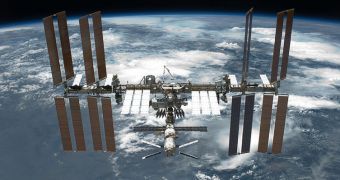The crew evacuation that was ordered aboard the International Space Station (ISS) on June 28 brings the issue of space junk back into the spotlight. The need to act to solve this issue is constantly growing.
Space debris, or space junk, are a collection of materials and components that belong to past mission to space. Every single rocket launch leaves at least some junk behind as it flies through Earth's orbit.
Entire rocket stages can be found among the debris, as well as smaller components such as screws, bolts, pieces of hull, foam and so on. The smaller pieces are made by chips of paint and other objects.
Over the years, vast amounts of junk have clogged Earth's orbits, and it's currently becoming a challenge to ensure that spacecraft being launched to destinations around the planet and beyond will make it to their respective destinations.
The ISS is particularly vulnerable to the threat, seeing how it now holds a permanent crew of six astronauts. During an emergency yesterday, all members of Expedition 28 had to jump aboard their Soyuz space capsules, and prepare for immediate return to Earth.
The object that caused all the commotion did not strike the station itself, but passed well within the pizza box-shaped enclosure that is designated as the orbital facility's safe zone, Space reports.
Space debris that can cause no danger to the station cannot be tracked using ground radars. But the impactor that threatened to hit the space lab was about 4 inches (10 centimeters) in diameter, which is extremely large.
Given the speed at which it was traveling, it would have easily passed right through the station, causing it to lose pressure, and to vent atmosphere in space. Life support systems would have been unable to cope with the strain, and would have failed.
“We tracked the object after it came past station. [It] came within 335 meters of space station on best estimate,” NASA Space Operations chief Bill Gerstenmaier said in a news briefing on June 28, adding that space debris can travel as fast as 17,500 miles per hour (28,163 kilometers per hour).
Experts are now urging authorities to allot the necessary fund for researching possible ways of removing these fast-moving objects from our planet's orbit. A cleaner orbit would make for considerably safer space travel, they add.

 14 DAY TRIAL //
14 DAY TRIAL //